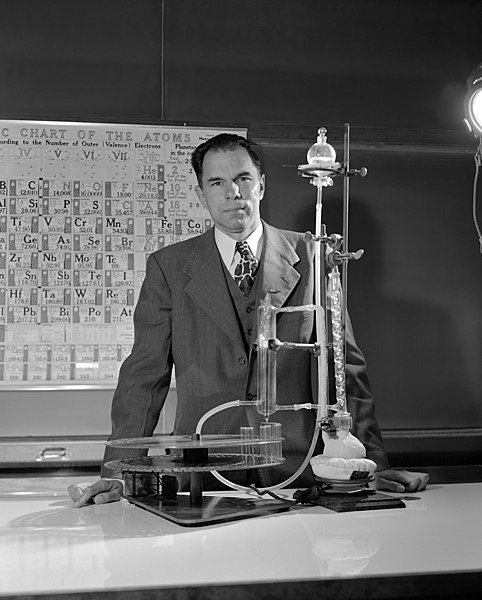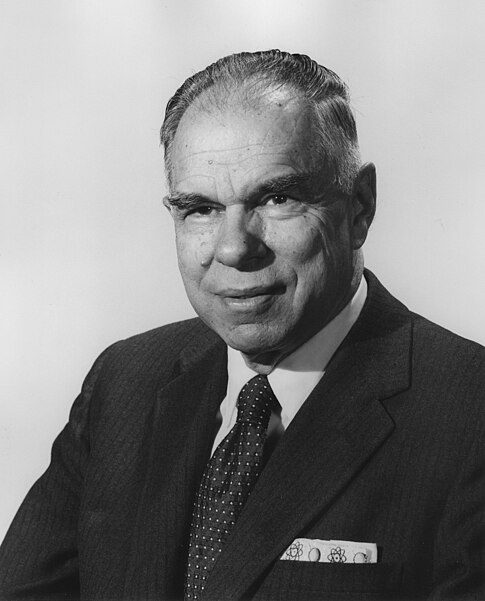Seaborgium is a synthetic chemical element; it has symbol Sg and atomic number 106. It is named after the American nuclear chemist Glenn T. Seaborg. As a synthetic element, it can be created in a laboratory but is not found in nature. It is also radioactive; the most stable known isotope, 269Sg, has a half-life of approximately 14 minutes.
Element 106 was named after Glenn T. Seaborg, a pioneer in the discovery of synthetic elements, with the name seaborgium (Sg).
Seaborg pointing to the element named after him on the periodic table
Glenn Theodore Seaborg was an American chemist whose involvement in the synthesis, discovery and investigation of ten transuranium elements earned him a share of the 1951 Nobel Prize in Chemistry. His work in this area also led to his development of the actinide concept and the arrangement of the actinide series in the periodic table of the elements.
Seaborg in 1964
Seaborg in 1950, with the ion exchanger elution column of actinide elements
Seaborg (second from left) during Operation Plumbbob
From left to right: Chairman Seaborg, President Kennedy, Secretary McNamara on March 23, 1962. By this point, McNamara and Seaborg had been discussing the AEC's studies on the ecological effects of nuclear war and "clean" weapon alternatives. (Courtesy: National Security Archive, Original: National Archives)





